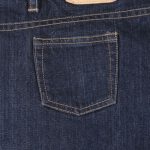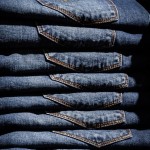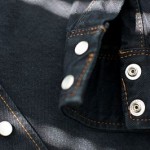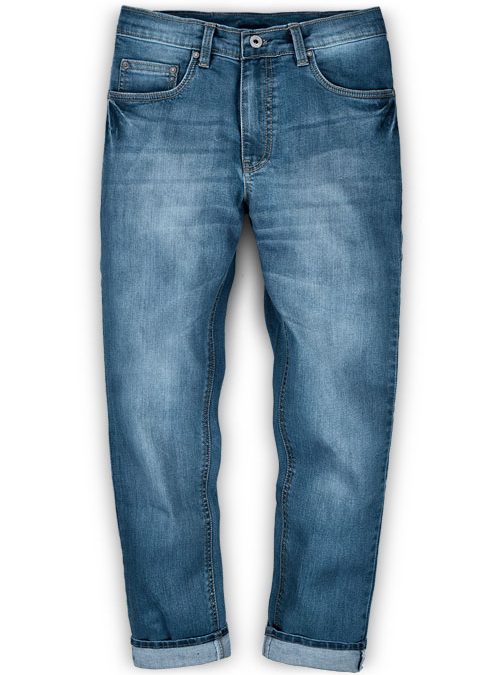
by MakeYourOwnJeans | jeans |
Stonewashed jeans have become increasingly popular in recent years. Not to be confused with acid-washed jeans, they offer a vintage look and feel that many men and women prefer. Rather than wearing the same pair of traditional jeans year after year, you can buy a pair of stonewashed jeans. As an alternative style, though, you might be skeptical of stonewashed jeans. In this post, you’ll learn more about stonewashed jeans and how to choose the perfect pair. What Are Stonewashed Jeans? Stonewashed jeans are denim trousers — or simply jeans — that are manufactured to achieve a worn-in appearance. They are specifically made using medium- and large-sized stones. Stonewashed jeans are placed inside of a large commercial-grade washing machine that’s filled with stones. When the washing machine spins, the stones pound against the jeans, thus creating a worn-in appearance. Many people assume that stonewashed jeans are made of a special type of denim, but this isn’t necessarily true. Most stonewashed jeans are made of the same denim as traditional jeans. Traditional jeans, however, aren’t processed using stones. Only stonewashed jeans are processed using this method. Placing stonewashed jeans inside of a washing machine with stones helps to wear them in so that look and feel aged. Stonewashed vs Acid-Washed Jeans: What’s the Difference? You’ll probably come across acid-washed jeans when researching the different styles of denim as well. Acid-washed jeans also have a worn-in appearance, which is achieved during production. With that said, acid-washed jeans differ from their stonewashed counterparts in several ways. Acid-washed jeans are similar to stonewashed jeans in the sense that they are both exposed to...
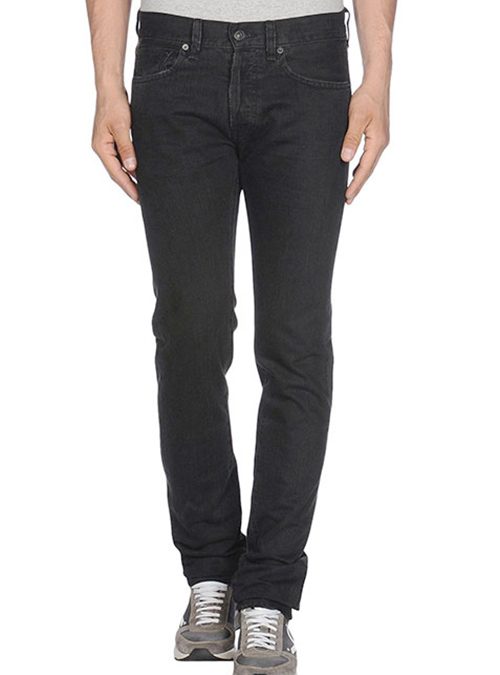
by MakeYourOwnJeans | jeans |
Skinny and stretch are two of the most popular styles of jeans. They both offer a form-fitting construction that creates the appearance of a slimmer silhouette. With either of these styles, you can rest assured knowing that your jeans won’t fit loosely. While many people assume that skinny and stretch jeans are the same, however, they differ in several ways. If you’re thinking about buying either of these styles, you should learn the differences between them. Only then can you choose the right style for your taste in fashion. What Are Skinny Jeans? Also known as slim-fit jeans, skinny jeans are characterized by a snug fit. Different jeans fit in different ways. Some of them fit loosely when worn. Relaxed-fit jeans, for instance, are known for fit loosely, meaning they have excess material that hangs or drapes from your body when worn. Skinny jeans don’t fit loosely. Instead, they offer a snug fit with little or no excess material. Skinny jeans became popular during the early 1990s. Around this time, famous musicians and celebrities began wearing them. They were particularly popular among members of well-known rock bands such as Poison, Bon Jovi, KISS and Motley Crue. Shortly thereafter, skinny jeans experienced a decline in popularity. With that said, they experienced a revival in the mid-2000s when countless men and women began wearing them again. Today, skinny jeans rank as one of the most popular styles of jeans. What Are Stretch Jeans? Stretch jeans, on the other hand, are any type of jeans that feature a hybrid construction of pure denim and an elastic material. Conventional wisdom may lead you...
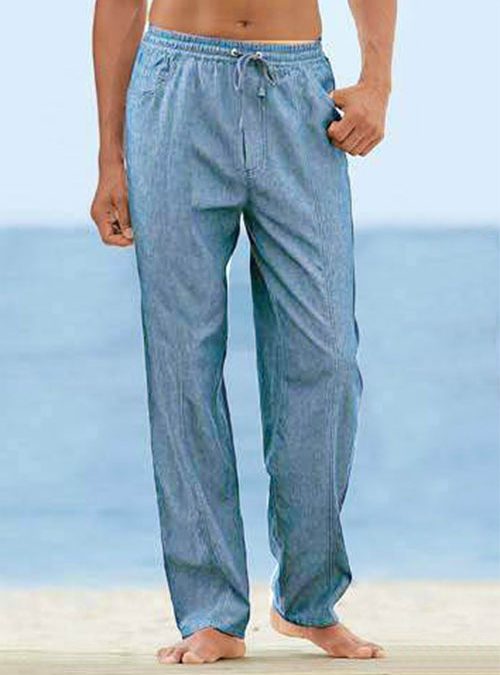
by MakeYourOwnJeans | Fashion, jeans |
Nearly everyone owns and wears jeans. Over the years, they’ve become the most popular type of men’s and women’s trousers. Consisting of durable warp-faced cotton — the weft goes under multiple warp threads — jeans are worn by countless men and women on a daily basis. Not all jeans are the same, however. In addition to traditional jeans, there are now pull-on jeans. The Basics of Pull-On Jeans Pull-on jeans are a special type of jeans that, as the name suggests, you can pull onto your body to wear. Most jeans feature a rigid waistband. To wear them, you’ll have to unbutton the fly, after which you can slip through your legs through the jeans’ own leg openings. Pull-on jeans have leg openings as well. Rather than a rigid waistband, though, they feature an elastic waistband. Most pull-on jeans don’t have a button, nor do they have a zipper. Instead, they feature a drawstring that wraps around an elastic waistband. With this unique design, you can easily slip into and out of pull-on jeans. What Are Pull-On Jeans Made Of? Assuming this is your first time hearing about pull-on jeans, you might be wondering what material they are made of. Being that they are jeans, pull-on jeans are made of denim. All true jeans, in fact, are made of denim — and pull-on jeans are no exception. Denim is a form of cotton, but it offers greater strength and durable than regular cotton. Pull-on jeans are made of cotton-based denim as well. With that said, they aren’t made of the same denim used in standard jeans. Pull-on jeans are...
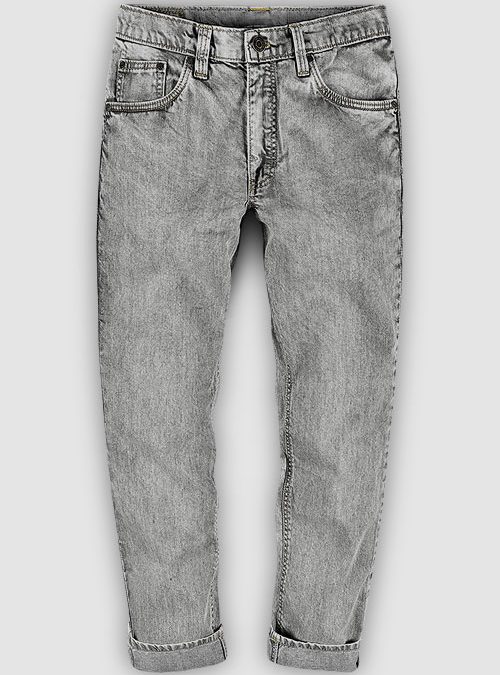
by MakeYourOwnJeans | jeans |
Blue has become synonymous with denim jeans. Ever since they were first invented over a century ago, jeans have been made in blue. Manufacturers chose blue dye because of its naturally strong reaction with denim. Blue dye settles deep into denim, allowing for an even and dark color. While blue is still the most popular color in which jeans are made, it’s not the only color. You can find jeans in many other colors, some of which are revealed here. #1) Denver Gray Denver gray has become a popular color for denim jeans. As shown in the photo above, it’s essentially a light gray color. Denver gray jeans have a gentle color that’s easy on the eyes. More importantly perhaps, they match most other colors. If you own a pair of Denver gray jeans, you’ll be able to wear them with most if not all of your outfits. The same can’t be said for many other colors. #2) Olive Another alternative color to consider when shopping for denim jeans is olive. Olive is a color that, as you may have guessed, reflects the color of olives. It’s a dark yellow-green color that works incredibly well for denim jeans. If you’re tired of wearing blue-colored jeans day after day, you can change up your style by investing in a pair of olive jeans. Olive jeans aren’t too bright, nor are they too dark. As a result, they’ve become a popular alternative to traditional blue-colored jeans. #3) White We can’t talk about alternative colors for denim jeans without mentioning white. White jeans have been around for decades. Consisting of an all-white...
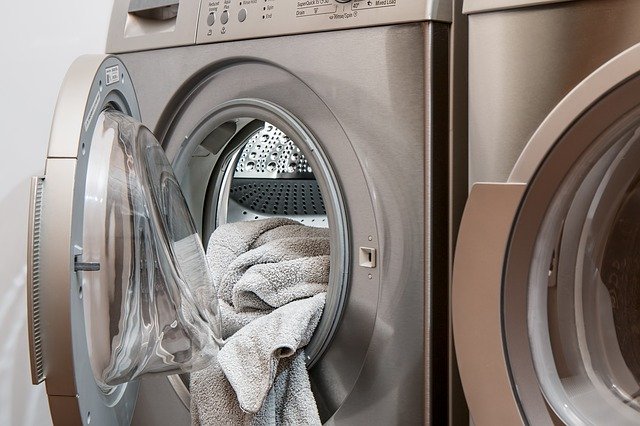
by MakeYourOwnJeans | jeans |
Jeans aren’t immune to the effects of dirt and debris. Like virtually all other garments, they require washing on a regular basis. You don’t have to necessarily wash them each time you wear them, but you will need to wash your jeans. Otherwise, they’ll develop stains and other superficial blemishes that lower their aesthetic value. After washing your jeans, though, you’ll need to dry them. So, what are some of the different ways that you can dry your jeans? Use a Clothes Dryer Not surprisingly, the most common method for drying jeans involves the use of a clothes dryer. Clothes dryers are large household appliances that spin garments around in a cylindrical drum while exposing them to hot air. The hot air causes moisture to evaporate out of the jeans, at which point it’s dispelled through a vent. Using a clothes dryer is probably the easiest way to dry your jeans. It doesn’t require any manual labor on your behalf. Just place your wet jeans inside the drum and turn on the dryer. The clothes dryer will then spin your jeans around the drum while exposing them to hot air. Clothes dryers have several settings, some of which include the following: Low heat: Uses a minimal amount of heat to protect garments from heat-related damage.Medium heat: Uses a medium amount of heat for a balanced combination of drying and protection against damage.High heat: Uses the highest amount of heat for stronger drying performance but at the cost of increased wear and tear.Tumble dry: Doesn’t use any heat and, instead, dries garments simply by spinning them around in a drum....
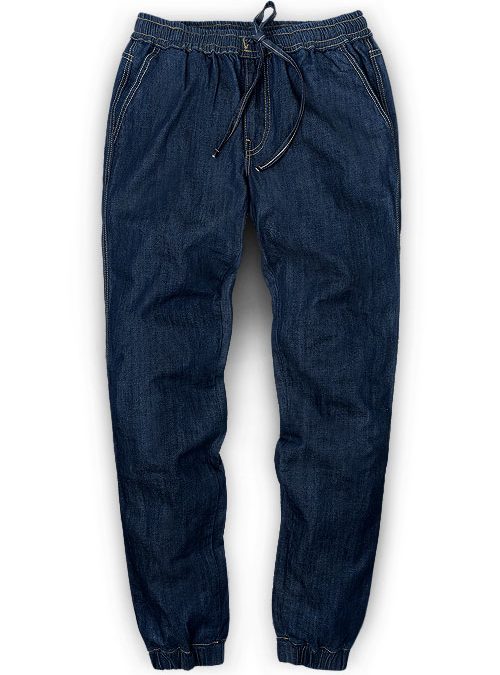
by MakeYourOwnJeans | jeans |
There’s no denying the fact that jeans are popular. Statistics show that the average person owns over a half-dozen pairs of jeans. Some people own even more. While all jeans are made of denim, many of them feature unique characteristics that distinguish them from the rest. In addition to traditional jeans, for instance, you’ll probably encounter traveler jeans. What are traveler jeans exactly, and how do they differ from their traditional counterparts? Overview of Traveler Jeans Also known simply as travel jeans, traveler jeans are a special type of jeans that are designed with an emphasis on comfort. They are known as “traveler jeans” because they offer a comfortable construction and fit that makes them ideal for traveling. Whether you’re walking around town or taking a multi-mile hike through the countryside, you can’t go wrong with a pair of high-quality traveler jeans. They offer a superior level of comfort that’s not found in other types of jeans. Traveler Jeans vs Traditional Jeans When comparing traveler jeans to traditional jeans, you’ll notice a few key differences. First and foremost, traveler jeans are designed with an elastic waistband, whereas traditional jeans are designed with a standard and rigid waistband. The elastic waistband used in traveler jeans has a drawstring that allows you to easily tie or untie them around your waist. In comparison, traditional jeans have a standard fly consisting of buttons and a zipper. The combination of an elastic waistband with a drawstring makes traveler jeans a more comfortable alternative to traditional jeans. Although there are exceptions, most traveler jeans also feature an elastic strip around the bottom of each...








